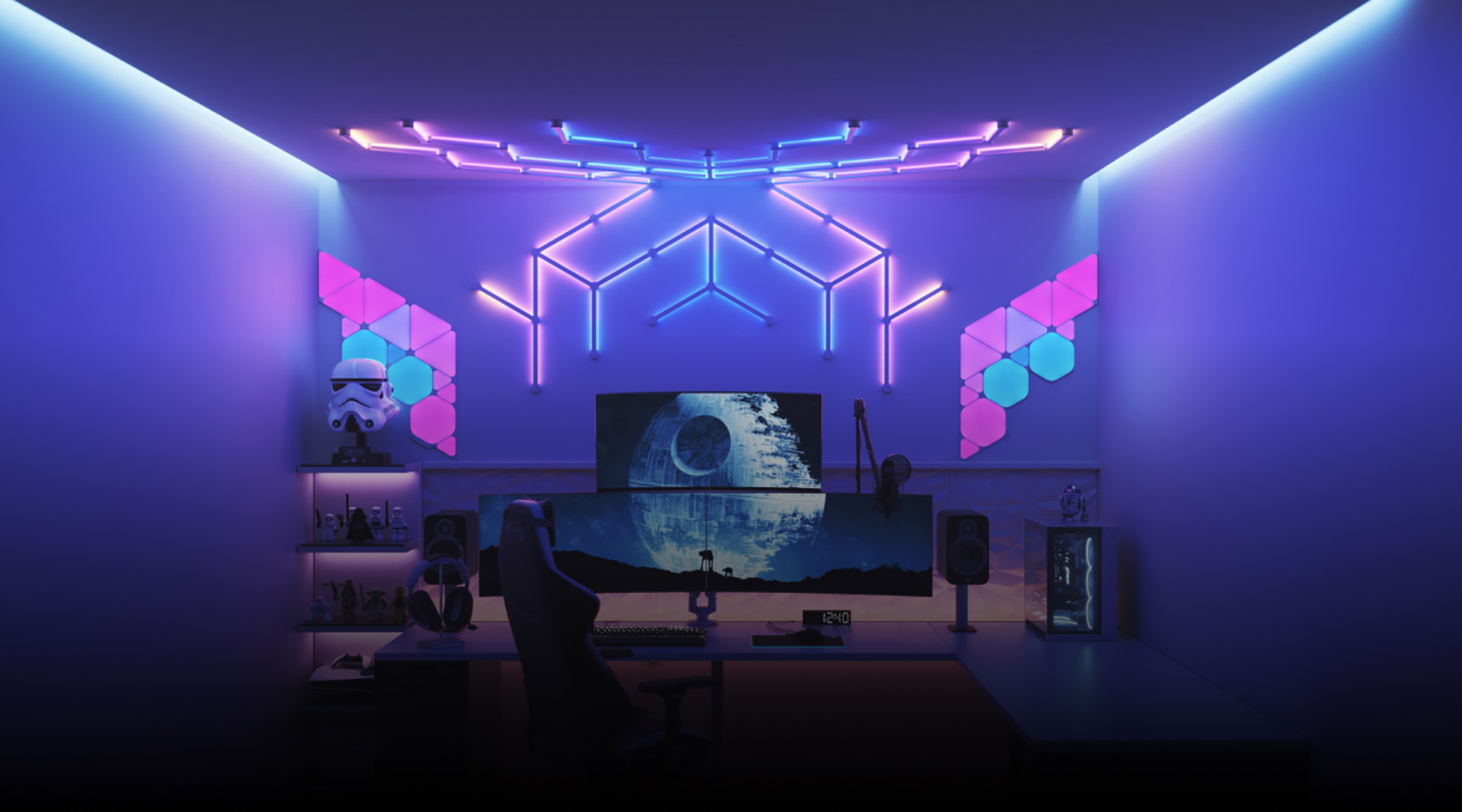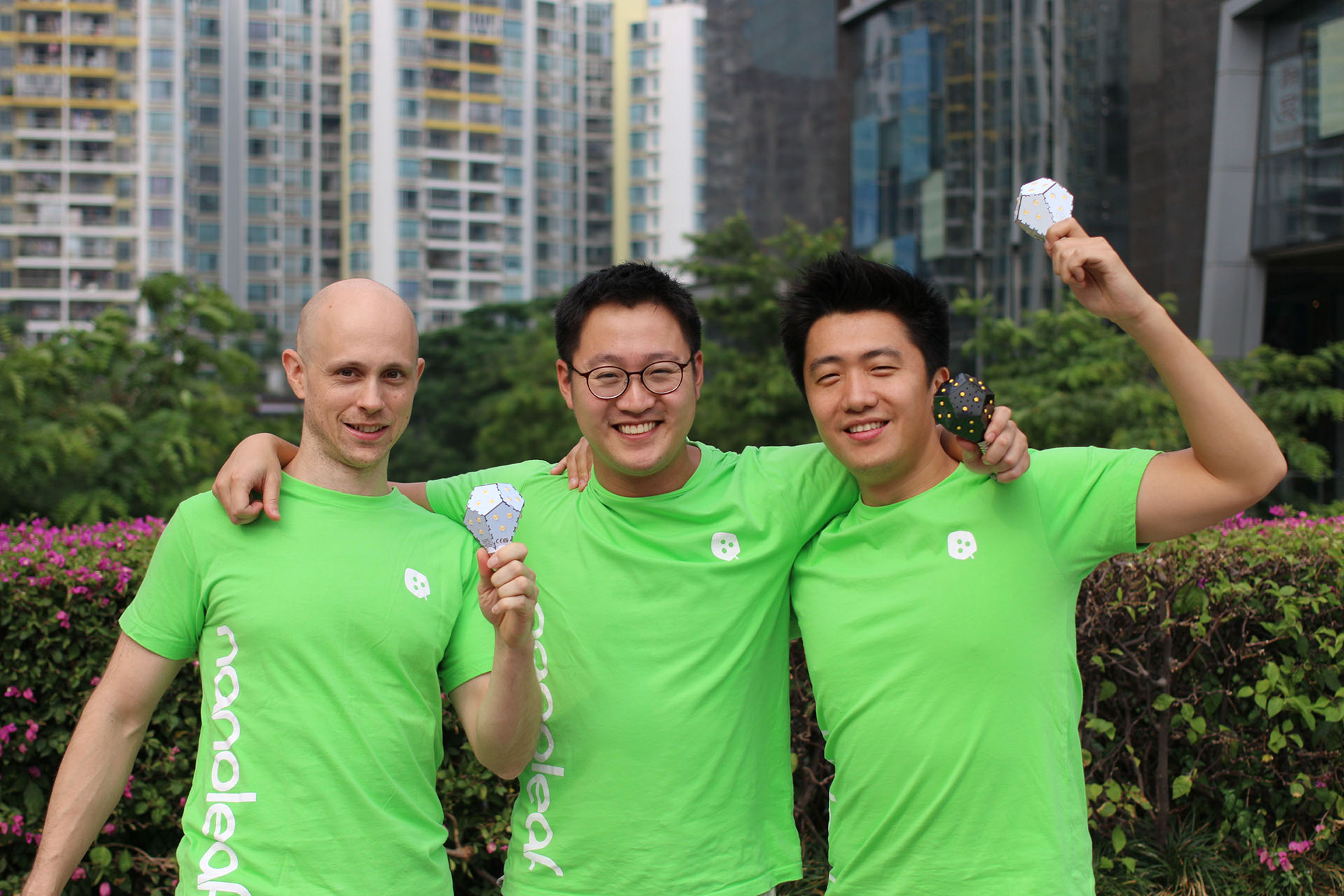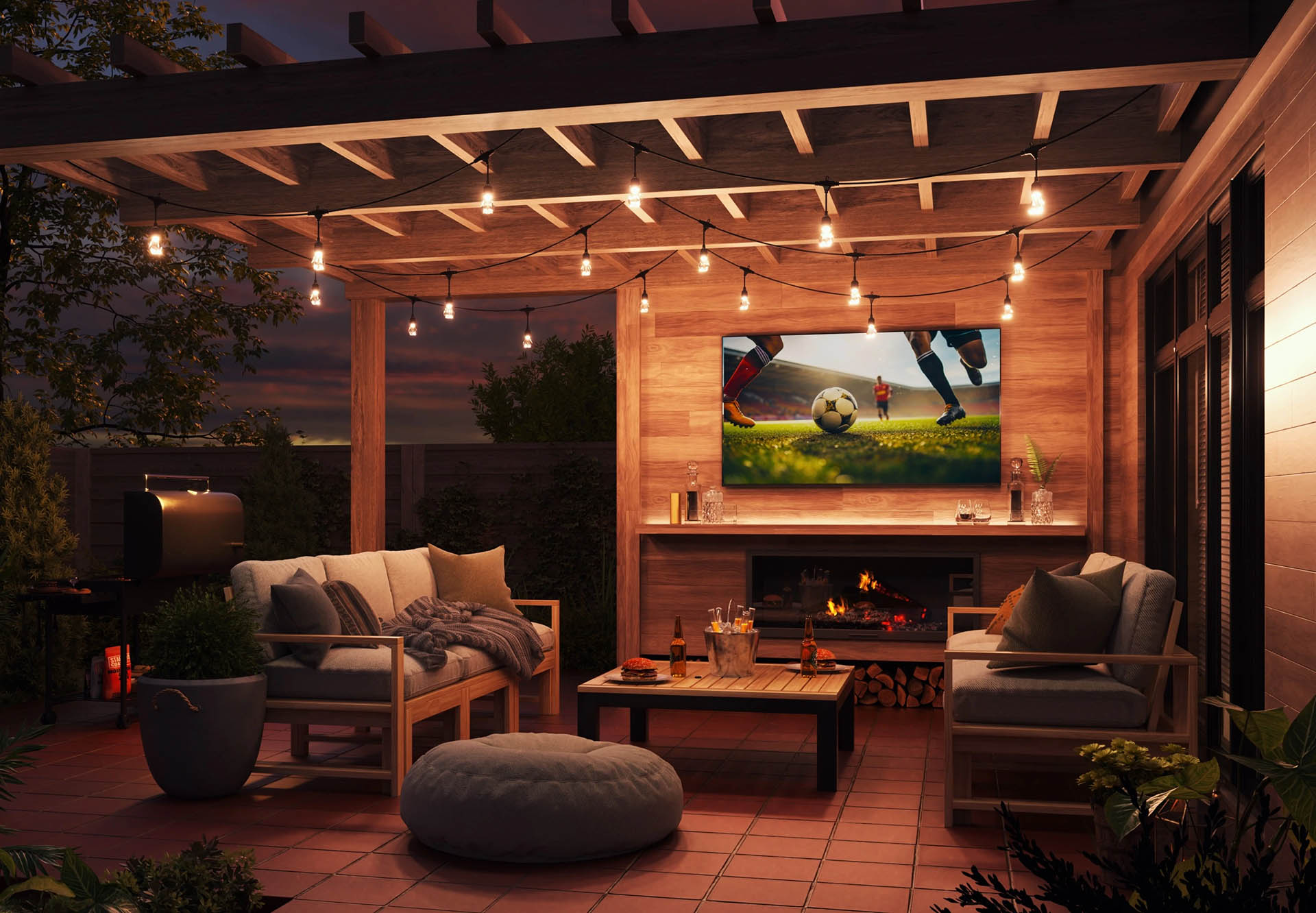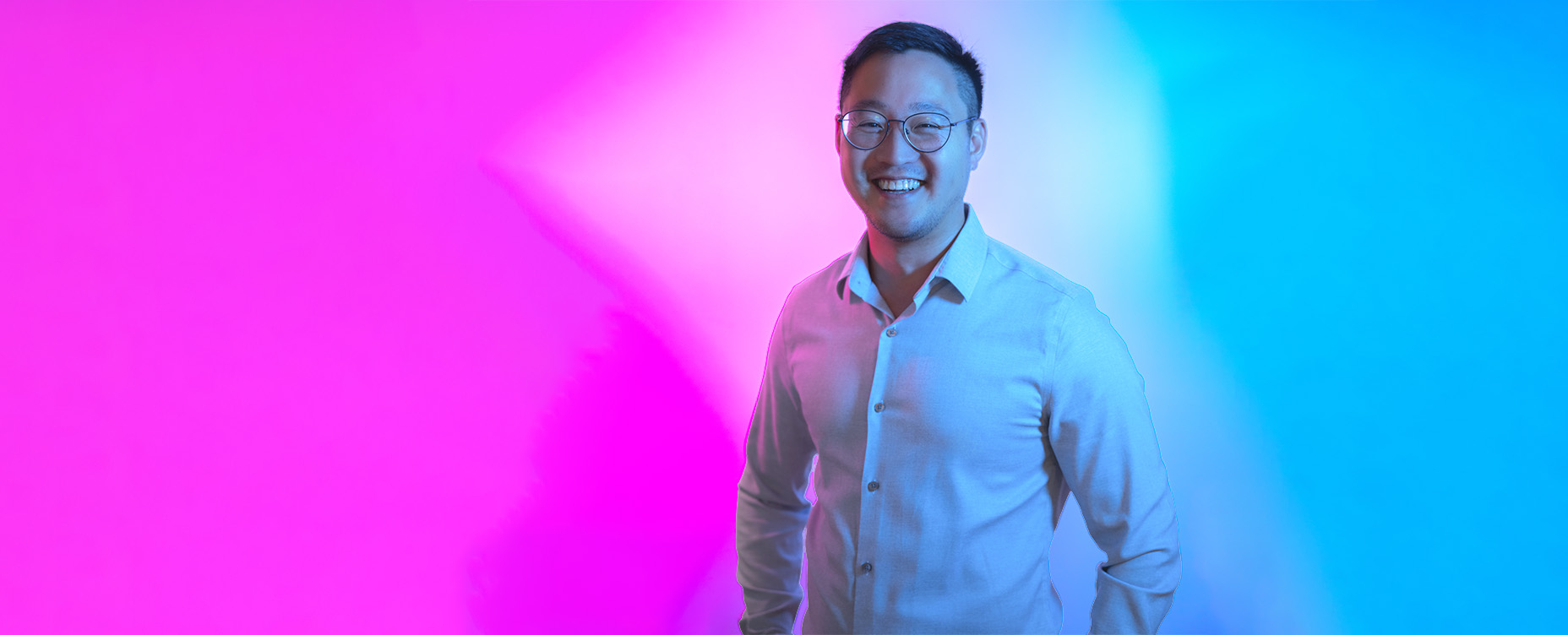Welcome to the Smart Home Founders series, where the founders of leading smart home companies get to tell their stories. In this edition, we interviewed Gimmy Chu, one of the founders and CEO of Nanoleaf, a pioneer in the modern smart home space with an accent on smart LED lighting.
Nanoleaf specializes in creating fun and creative indoor and outdoor lighting, available in various shapes like lines, triangles, squares, and hexagons, while also producing smart bulbs, LED strips, and ceiling lights.
Nanoleaf's Shapes product line-up is fully modular, allowing you to unleash your creativity and decorate your living space to match your taste. Nanoleaf lights produce vibrant colors and come with some interesting features like music sync, touch control, and screen mirroring.

Hey Gimmy! Thanks for joining me today. How are you doing?
Hey, thanks for having me. I'm doing okay. I'm just beginning my day. It's about 9:30 am here, so I'm just getting ready for my daily tasks.
Ah, good morning! Let's wake you up a bit by starting with a technical question. Was your first Thread product Nanoleaf Essentials? And did it work exclusively with the Apple HomePod?
Yes, Essentials with HomeKit-over-Thread was the first one. Soon after that, we started developing Matter-over-Thread products, which was quite a journey. We believe a lot in being on the bleeding edge of technology. That is how we know why it's called the 'bleeding edge'. A lot of blood and sweat goes into it when you're first.
I think Thread has a lot of potential for the future. It enables longer-range communication and lower power consumption, which is our focus for our upcoming releases.
Are you referring to your upcoming Sense+ line? It makes a lot of sense for those devices to be battery-powered.
Yes, that is correct. That was our whole vision for Thread: How do we include sensor technology in the smart home? At the time, there was Zigbee, Bluetooth, and Bluetooth Mesh. We went very far down the line with Bluetooth Mesh, since most smart homes use Bluetooth. It was not ideal, there were issues, and we were kind of pulled towards Thread, since all Big Tech companies were going in that direction.
Did you have to do a lot of Thread work, or did you use off-the-shelf SDKs from chip providers?
I would say that because we were so early, we needed to do much of the work ourselves. Obviously, we were working with chipmakers, but when a customer has an issue, they ultimately have an issue with our product. So we needed to deal with those issues and solve them ourselves. We contributed back many bug fixes to the OpenThread and Matter workgroups. It took a lot of resources, but ultimately, our goal is to create innovations, not standards.
I also see the potential in Matter and Thread, but there's also a big downside that limits innovation. You have to follow the standard in developing your products, so how do you deal with that? Get the best of both worlds, innovate, and follow the standard?
That's a really good question. I think Matter will reach a point where it will be able to control things like custom attributes for different types of products. For example, running a scene is not standard for Matter products, but they will eventually start introducing things like that. In the short term, we do still have our app to allow our customers to create scenes and use other features not available with Matter.
I think configuration is different from usage, right? Many people like to turn on/off their devices on different platforms, but for products like ours, you still need to use our app to customize your lights.
So, you don’t see your iOS or Android app disappear anytime soon? At least not for the non-essential kind of products, like light bulbs?
Even for a light bulb, our goal and vision is to create functionality beyond what the standard offers. To do that, there's stuff that must be done within the app. I believe people are used to having several apps for their smart devices. There's a place for platform apps like Homey that allow you to use all devices in one place, and then there's a place for branded apps to help configure and use the products differently.
Platform apps are indeed more for automation, sharing access, and that kind of thing.
I agree, I like what you guys have built with Homey, and I think that's where the smart home gets very interesting. We're focused on lighting. We're not trying to be a platform for everything and everyone. We want to do the coolest lights anyone has ever seen and create lighting experiences that are different from anyone else.
Can you tell me something about your Kickstarter campaigns? Were the Aurora Panels your first product after the campaigns?
We had two Kickstarter campaigns. The first one was the world's most energy-efficient light bulb with a folded PCB circuit design. The second one was actually a dimmable lightbulb that didn't need a dimmer switch. If you flicked the switch on and off really fast, it started to dim, and you could just stop it wherever you wanted. We thought that was really clever since most light switches are simply on-and-off switches, but now you could also use it as a dimmer.
Unfortunately, we realized it required too much consumer education and decided to offer something simpler and easier to use. This was when HomeKit launched, and we actually strived to be the first-ever HomeKit lightbulb, eventually losing the race to Philips by about a month.
The truth is, we never really wanted to be a lighting company. Things sort of unfolded. We started making solar products, which is why we have really energy-efficient light bulbs. Our first product was actually something called the Nano Grid, a battery-powered solar grid capable of powering a small building. You could daisy chain more of these and have your solar station — the Nano Grid. We never launched it since we realized solar products are hard to sell and ship. We decided to go with the lightbulb on Kickstarter, and that's how we became a lighting company, haha.
You did two successful Kickstarters, but at the end of the campaign, at least that's what we experienced, you have no money leftover actually to make the new batch. How did you bridge that gap?
Two of the three founders still had full-time jobs when we were doing our Kickstarter. So, we were working full-time, we did not pay ourselves from the campaign, and at the end of the run, we had 50K leftover for making products.

We got a little bit of news and media from it, too. The three founders were all from the University of Toronto. When the president of the university found out about us, he started to give away our light bulbs as gifts to people who would donate to the university. Eventually, one of the donors wanted to meet us and invest in Nanoleaf. We were just a bunch of engineers, so we had no idea what that meant. “You want to give us money? How?” We had a couple of years to figure out how to turn this into a business, so here we are, 10 years later.
Our stories are quite alike. We raised close to a million euros about one year after our Kickstarter and have been profitable for a few years. Not having to raise more money has been really relaxing. It's a relief not to have the board constantly push you.
Yeah, I know it's not easy. Especially for a hardware company managing cash flow. I don't know about you, but I have this never-ending cycle of getting excited about the plans at the beginning of the year, getting nervous in the middle of the year, and wondering if Q3 will hit the forecast set. You end up being nervous until the very end.
It's when you zoom out that I think we're really lucky to be in a position where we could have a team of people helping us build something cool, something you believe in, and something you're passionate about.
You're a very well-known brand in the smart home space and, I guess, even with online streamers. That's quite an accomplishment. I'm also a bit jealous because your product is very visible. I can see your product right now. I can put a Homey Pro here, but it wouldn't impress you.
I think we're lucky in that sense. There's a virality to the marketing aspect of it. When somebody has one of our products, the first thing that they want to do is show their friends. I want to see that little smirk on someone's face when they see one of our new products or features.
I remember when we were creating our rhythm feature, the thing that allows our panels to react to music. We spent a million dollars on R&D, and I remember thinking, what other CEO does that? Spend a million dollars on a silly feature to make lights dance to music. I loved it, and it was something that I was really proud of. As a kid, I remember looking at Winamp's visualizer and thinking this is so cool. What happened to that? As the CEO of a company, I feel like I have the privilege to be in a position where I can dream up products and have a team of people take a risk and build it.

Are you mostly coming up with the products?
No, we have a whole team of people. So I would definitely not take full credit for it, but ultimately the decision comes down to me. Luckily for us, a lot of our product designers are super creative. I always give the analogy that if it's like throwing darts at a dartboard, I will consistently hit sixes and sevens out of ten, but I'll never hit the bullseye. The designers, on the other hand, throw wildly. Sometimes it's completely off the board, but once in a while, they will hit that bullseye, and I will know when they've hit it.
That's a great analogy! I think the CEO should have the best gut feeling about this kind of thing. At a certain point, you just say, 'Okay, so this is probably going to be a hit!'
I imagine a lot of big business leaders are like that, too, because what a business leader needs to be is an all-arounder. You need to understand a little bit about finance and a little bit about people. A big part of being a CEO is understanding the business aspects, but it also involves knowing your customers and partners. Ultimately, business is about doing business with people, whether it's your team, customers, partners, or retail partners. People like doing business with people they know and trust.
How much of your team is involved in R&D? How has your team evolved with time?
We're distributed, but if I had to guess, probably about 60% of it is R&D. Honestly, it was a pretty linear progression. We started by figuring out the supply chain in Asia, so our China team was established first. Then, in 2015, I returned to Canada to build a team in Toronto. From there, we had our Asia and Toronto teams, and then we got introduced to someone in France. He became the managing director of our European office, which we based in Paris because he was living there.
That person was Philippe. He's been with us for a long time and has single-handedly built up the European market. After one or two years, he started hiring additional staff, and now we have a small team running our European business from Paris. Philippe has been fantastic. People often ask why we headquartered our European operations in France, mainly because of Philippe. This ties back to my earlier point: business is about people. Sure, there might be tax benefits to setting up somewhere else, like Ireland, but for us, it was more important to be where our key people were.
I'm curious about your China story since you are currently producing there. How did you start doing that? It's quite challenging if you have no prior experience and want to manufacture your product. Did you just go there and find a factory? Tell me how you managed it.
We currently produce from China, Vietnam, and the Philippines, so we're slightly more diversified. We have three founders at Nanoleaf, and luckily, one of them was my roommate throughout university. He graduated in electrical engineering with me but went on to work for his family's business, which involved exporting bathroom furniture — think shower cabins and bathtubs. He was running a factory for his aunt in China and thought, "What am I doing here making furniture with my electrical engineering degree?"
The three of us were all part of the University of Toronto solar car team, and he wanted us to come together to create products that could make a more meaningful impact on the world. So, that's when I and the other two founders went to China. We started to understand the supply chain and how things work there.
We were fortunate because the three founders had very different skills. After graduating, I worked as a consultant, doing technology consulting for large corporations, so I have that big company experience. Christian has supply chain and manufacturing expertise. Tom, who graduated with a PhD in biophysics, is the mad scientist of the group, and many of our technology and innovations come from him.
You've been doing this now for 12 years. You seem to really enjoy it, but let's say a big company comes along and says, 'Hey guys, we love what you're doing, and we want to buy your company.' Would that be something that you would be interested in?
Yeah, I'm not one of those super possessive founders who insists on never selling and staying until IPO. I'm more pragmatic about it. Ultimately, we have investors and three co-founders, so the ownership is distributed. If someone wants to acquire us, I would consider whether I can still be a shareholder, continue doing what I do, or if they plan to kick me out. What are their full intentions? It depends on all of that.
For now, my priority is to ensure my staff is taken care of and that we can continue to build cool stuff. I believe that is more valuable than money.

Did you have some issues producing the hardware in the first place? Maybe the Aurora panels or any of the other new products? Some details about what went wrong, maybe?
Things always go wrong in different ways. I remember the first light bulb we created — our initial design was on a white PCB board, and we aimed to produce white light bulbs. However, when the PCB boards went through a reflow oven to heat up and solder all the components onto the boards, our white light bulbs came out brown or beige.
So there we were. Our entire batch of white light bulbs for our Kickstarter customers turned beige. We had to decide: do we ship out beige bulbs? No, they ordered white and would wonder, "What the heck is this?" We had to build another batch and ship that one off.
I also remember our first Rhythm module. We had a Doppler radar sensor in there that we wanted to use to enable motion sensing through a firmware update. However, every time we attempted it, the 10-gigahertz Doppler radar somehow destroyed the five-gigahertz Wi-Fi network at home. So, unfortunately, that was a bit of a failure. If we had succeeded, it would have been really cool. We would have had a radar that sensed when someone was in the room and could turn on presence sensing for our lights.
When it comes to the panels, that came a bit later in our journey, so we had more experience by then. However, despite our efforts to improve, there was a batch of controllers with hardware issues. This was definitely a hiccup; a DC to DC component would burn out over time, which was challenging to identify.
Fortunately, it was a relatively small batch, but it did cause some problems for us. However, it is what it is, right? It could have been worse; just look at the Samsung phones that were exploding on planes.
Hardware definitely presents interesting challenges. It's amusing because someone once suggested, "Gimmy, you should sell your company and start a software company." But I'm not sure if I'd really want to do that. I find hardware kind of fun; I just wish the financial metrics were as good as in the software business.
I think hardware is super hard, but holding your product in your hand and seeing it in other people's homes is so much more rewarding. It also takes a lot more effort for competitors to catch up. I think software can be copied very easily. Figuring out what to build is usually 90% of your time, and then when someone sees your software, they can just copy it. Who do you consider to be your primary competitors?
There are definitely a lot of smart lighting companies out there, like Phillips, Govee, and LIFX, but I think our biggest competitor is ourselves. Truly innovating means constantly coming up with new ideas. If you can't do that, then you've failed.
So, rather than always looking at your competitors, it's more important to focus inward and ask, "What can I do that's original and new?" That's where real innovation happens.
Is there a reason why a public Cloud API for your products has never been released?
It really comes down to manpower. I know you guys have been looking for a cloud API, and I think we might have some time to do that now. We've recently shuffled some team members and added people to our relatively small cloud team. With these changes, we might be able to make it work.
We might be able to spare a few weeks to open up what we've built for Google and Amazon and make it more public. We just hadn't had the time to scope it out before, but now it seems more feasible.
Are there any new products coming out that you haven't announced yet?
We recently launched two new products. Earlier this year, we introduced Skylight, our first venture into ceiling lighting. It's AC-powered, and you can daisy chain the units to create a setup that is as large as your circuit breaker can handle. It's really cool and has been one of our best sellers over the past few months since its launch.
Additionally, we just launched our outdoor string lights, which look absolutely beautiful. My design team did an amazing job, transforming what is often seen as a commodity into something special. They look stunning, especially at night, resembling little lit-up gemstones. Pictures don’t do them justice—you must see them in action to fully appreciate their beauty.

We also launched an indoor light strip with high resolution and a super high refresh rate, featuring 60 addressable LEDs per meter. This allows for some really cool lighting effects, and we plan to build up on this product.
We discussed Sense+ earlier, and I believe it will add significant value to all our products. It's essential to build an ecosystem of products, but it's equally important to provide a range of experiences for our customers. While people love connected products, there are times when they just want a physical switch to control their lights. Sense+ bridges that gap, enhancing the overall user experience.
As we move into the second half of the year, we have more products set to launch, so it will be a busy and exciting time for us.
Okay Gimmy, thank you so much for your time. It was a pleasure talking to you about the beginnings of Nanoleaf.
Thanks for having me, nice talking to you too. I hope we can do more nice things together with Homey in the future.







